WordPress 6.8: Key Updates and Enhancements
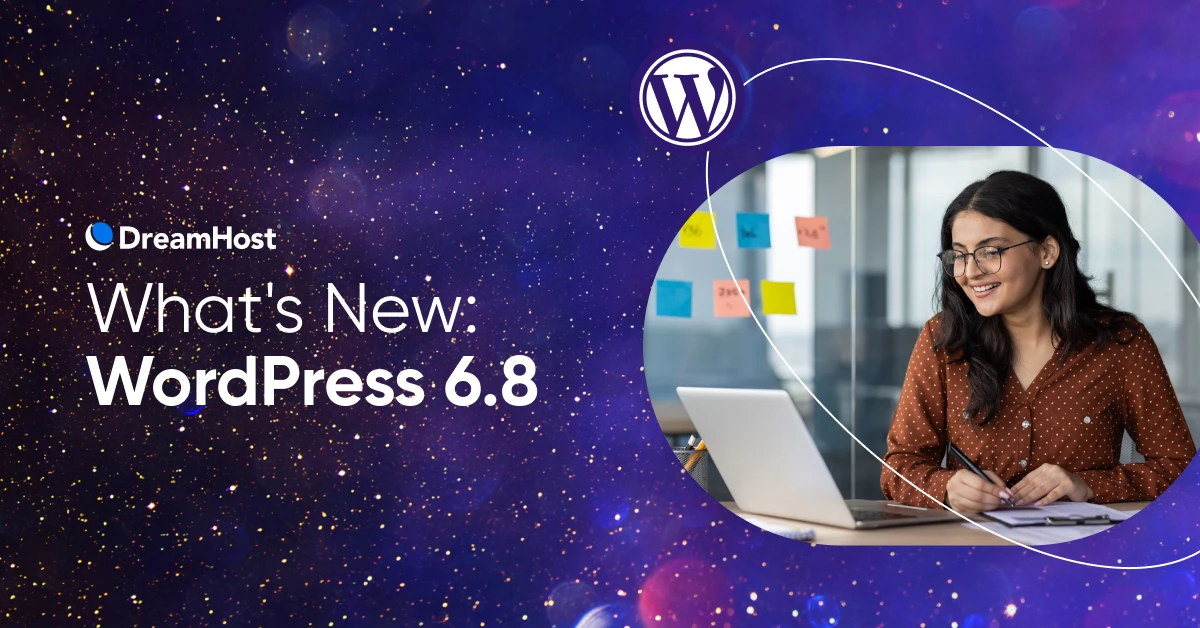
WordPress 6.8 is being eyed for an April 15, 2025, general release, and, in contrast to the majority of other WordPress releases, this release may include fewer new features than previous major updates. Version 6.8 will prioritize refining existing functionality and addressing bugs. While new features might be included, they’ll only be considered if they are sufficiently developed.
Here’s a look at some of the upcoming bug fixes and refinements.
Adding Speculative Loading Support
One proposed enhancement will integrate speculative loading into WordPress Core to improve page load performance. This technique uses prefetching or prerendering to load resources the browser anticipates users will need, resulting in faster page transitions and a smoother browsing experience.
The implementation will build on the functionality of the Performance Team’s Speculative Loading plugin. By default, resources would be preloaded in the background in a “conservative” mode to minimize potential issues. Also, developers would have the flexibility to customize this behavior using a new filter, “wp_speculation_rules_configuration.”
Integrating speculative loading into WordPress Core will bring measurable performance improvements. The preloading of anticipated resources will make site transitions faster and easier while also maintaining compatibility and user experience. When implemented properly, it’s a big step forward for WordPress’ performance optimization efforts.
Enhancements to the Style Book
The “Style Book,” an essential tool for managing and previewing WordPress block styles, will likely receive several needed improvements in WordPress 6.8. Sections like typography, colors, and individual blocks should automatically activate as you navigate the corresponding menu items, offering users a more intuitive and focused experience for fine-tuning their designs.
Instead of replacing itself, as the panel expands from left to right, it makes navigating the Site Editor through all available options easier and more straightforward, while previewing the changes in the panel on the right.
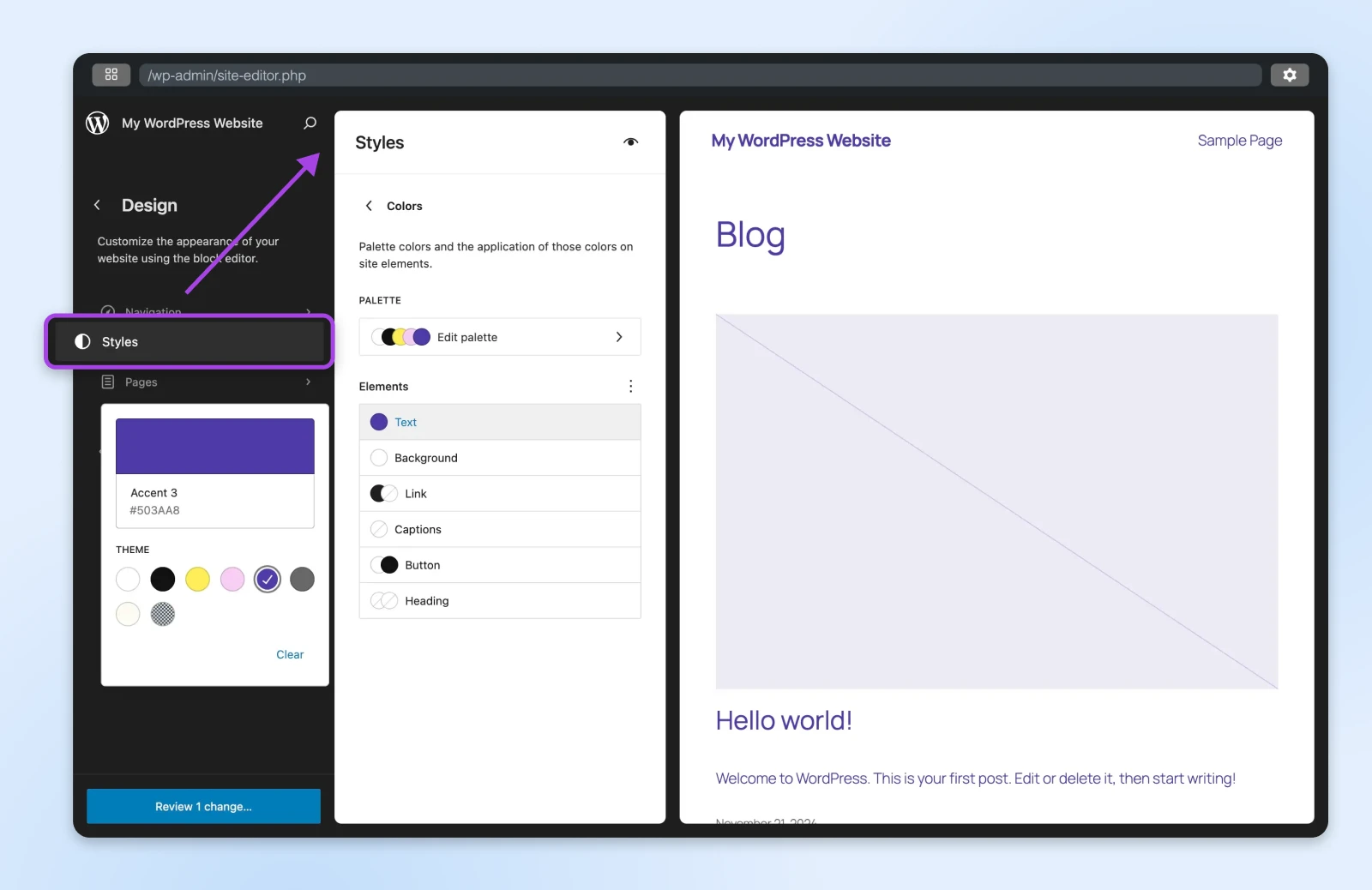
Improved Starter Content Experience
Similarly to the Style Book, WordPress 6.8 aims to introduce a clarified approach to managing starter content by replacing the previously available modal with the “Block Inserter” panel. This enhancement streamlines the process of adding predefined content to your site, making it more consistent with the overall block editing experience.
This change allows users to explore and insert starter content directly through the Block Inserter interface. The updated workflow is more intuitive and aligns with how users interact with other blocks and templates within the editor. The onboarding process for new users will be smoother, and experienced site builders will benefit from increased productivity.
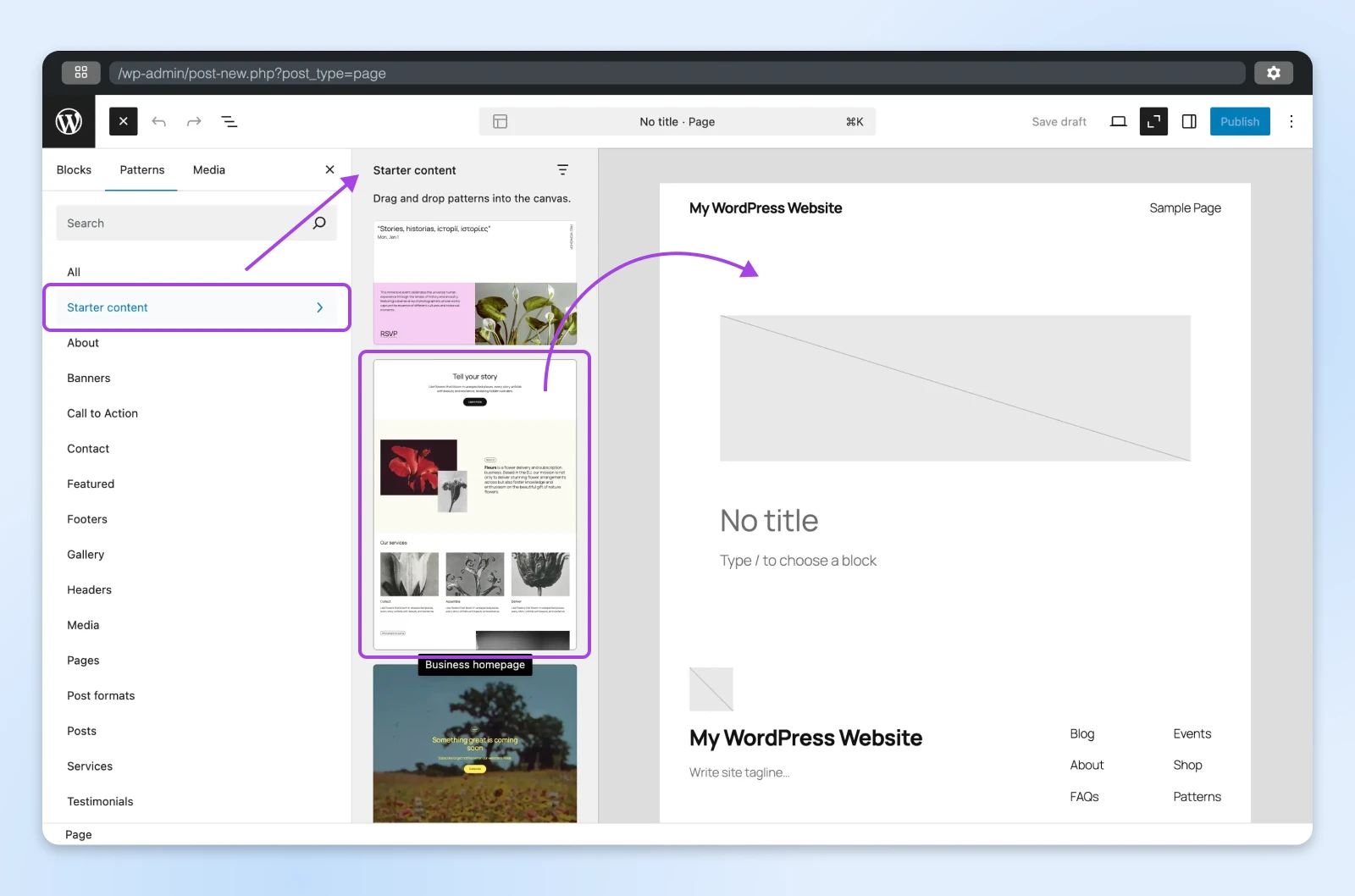
This proposal introduces a standardized and accessible tooltip system to WordPress Core. Tooltips help improve accessibility and usability in WordPress by providing context or guidance in the user interface. Especially for WordPress 6.8, this initiative aligns with the platform’s goals of inclusion and better support for developers.
The proposed solution involves creating a core-supported tooltip mechanism that uses semantic HTML and ARIA attributes to ensure accessibility. This change would make tooltips readable by assistive technologies and improve usability for everyone, particularly users with disabilities.
In addition to accessibility, this proposal enhances the developer experience by providing a prebuilt, reusable tooltip API. Developers can save time, avoid fragmented implementations, and adhere to WordPress’s core standards.
Enhancing Security With Warning Alerts
To help administrators avoid potentially dangerous misconfigurations, another proposal adds a warning by default in the settings panel. An issue arises when open registration is enabled (allowing anyone to create an account) and the default user role is set to a high-level position, such as “Administrator,” “Editor,” or “Author.” If these settings are mistakenly combined, unauthorized users could gain too much access, leaving the site vulnerable to attacks.
An alternative will probably be to limit the roles that the administrator can select in a dropdown, as noticed in the “Remove administrator and editor from default role selector” issue.
This change enhances security without requiring significant development effort. By proactively alerting or limiting administrators to risky configurations, WordPress can prevent issues before they occur. This approach reduces the risk of privilege escalation and educates users — especially beginners — on how to secure their sites effectively.
Adding Prefixes to Admin Notices
An idea has been put forward to add prefixes such as “Warning,” “Error,” “Success,” and “Info” to all WordPress admin notices. This small but impactful change will improve accessibility and clarity, particularly for users relying on screen readers or those with color vision deficiencies.
Currently, admin notices use color to indicate their type — red for errors or green for success — but this approach is ineffectual for all users. By including text-based prefixes, the notices can communicate their type more clearly, regardless of visual impairments, and make it easier for all users to understand the message’s purpose.
For example, instead of simply saying, “Your plugin has been deactivated,” the notice would read, “Error: Your plugin has been deactivated.”
The update has several advantages: the notices are user-friendly with screen readers and align with accessibility standards. Clearer messages reduce confusion by explicitly identifying the type of message. Also, it creates a standardized format for notices across WordPress, plugins, and themes.
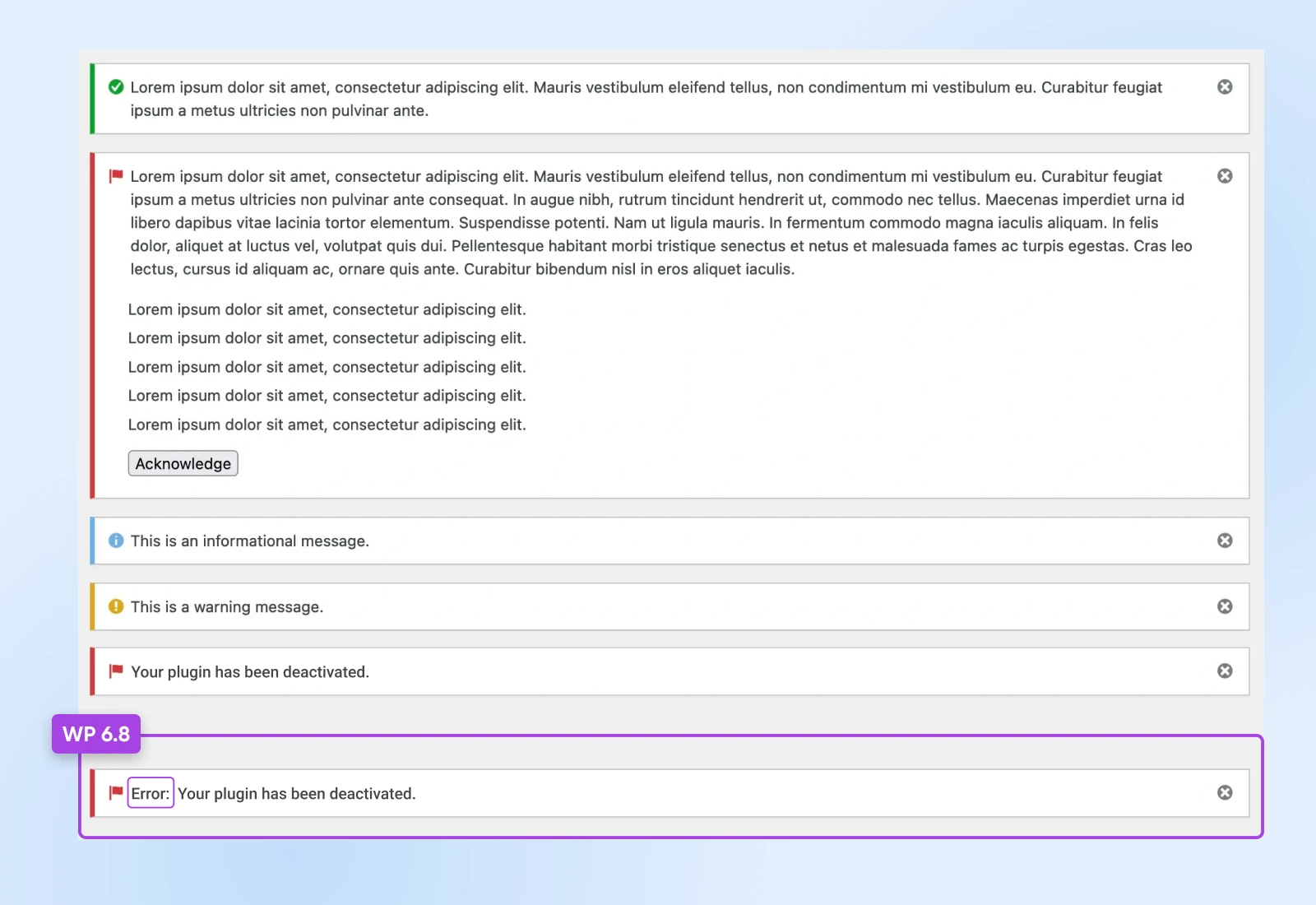
Improving WP_Query Cache Keys
The goal of this initiative is to optimize how cache keys are generated by the “WP_Query” class to improve WordPress performance, reduce database load, and increase reliability.
WP_Query
WP_Query is a PHP class that you can use to construct queries to the WordPress database. It enables you to customize how posts or pages are rendered on the page without writing SQL queries.
Read More
Currently, the cache key system is inefficient, leading to unnecessary database queries. When cache key generation is refined, queries can be served more efficiently from the cache, resulting in faster page loads and reduced database strain, particularly for high-traffic sites. Additionally, standardizing the cache key system improves consistency, makes caching more predictable, and simplifies troubleshooting for developers.
This optimization has a broad impact since “WP_Query” is a core component powering many WordPress features. Enhancing its efficiency benefits the entire ecosystem, improving performance for all WordPress sites. Including this update in version 6.8 aligns with WordPress’s commitment to speed and scalability while posing minimal risk to compatibility. For large and high-traffic websites that rely on efficient caching to scale effectively, this change is critical.
Adding Border Support to Bundled Themes
Another proposed enhancement updates WordPress’s bundled themes by adding border customization options, allowing users to personalize their sites more easily. Currently, many default themes, such as Twenty Twenty-One and Twenty Twenty-Two, lack support for new Site Editor design tools like borders. This change improves customization and usability by enabling users to adjust the width, style, and color of borders directly in the editor without needing to code.
This update empowers users to create unique, visually appealing layouts with customizable borders without relying on custom CSS. It also modernizes bundled themes, ensuring they remain aligned with WordPress’s design tools while offering developers clear examples of incorporating block-based design features. The WordPress 6.8 upgrade, therefore, prioritizes user empowerment, theme modernization, and full-site editing.
A proposal has been introduced to integrate links to Learn WordPress resources into the “WordPress Events and News” dashboard widget. This update aims to encourage ongoing learning within the WordPress community.
Currently, the widget provides updates on upcoming events and WordPress-related news. Users can access valuable educational resources directly from their dashboard by adding links to tutorials, courses, and workshops from Learn WordPress. The goal of this initiative is to promote deep engagement with the WordPress ecosystem by highlighting the platform’s learning materials.
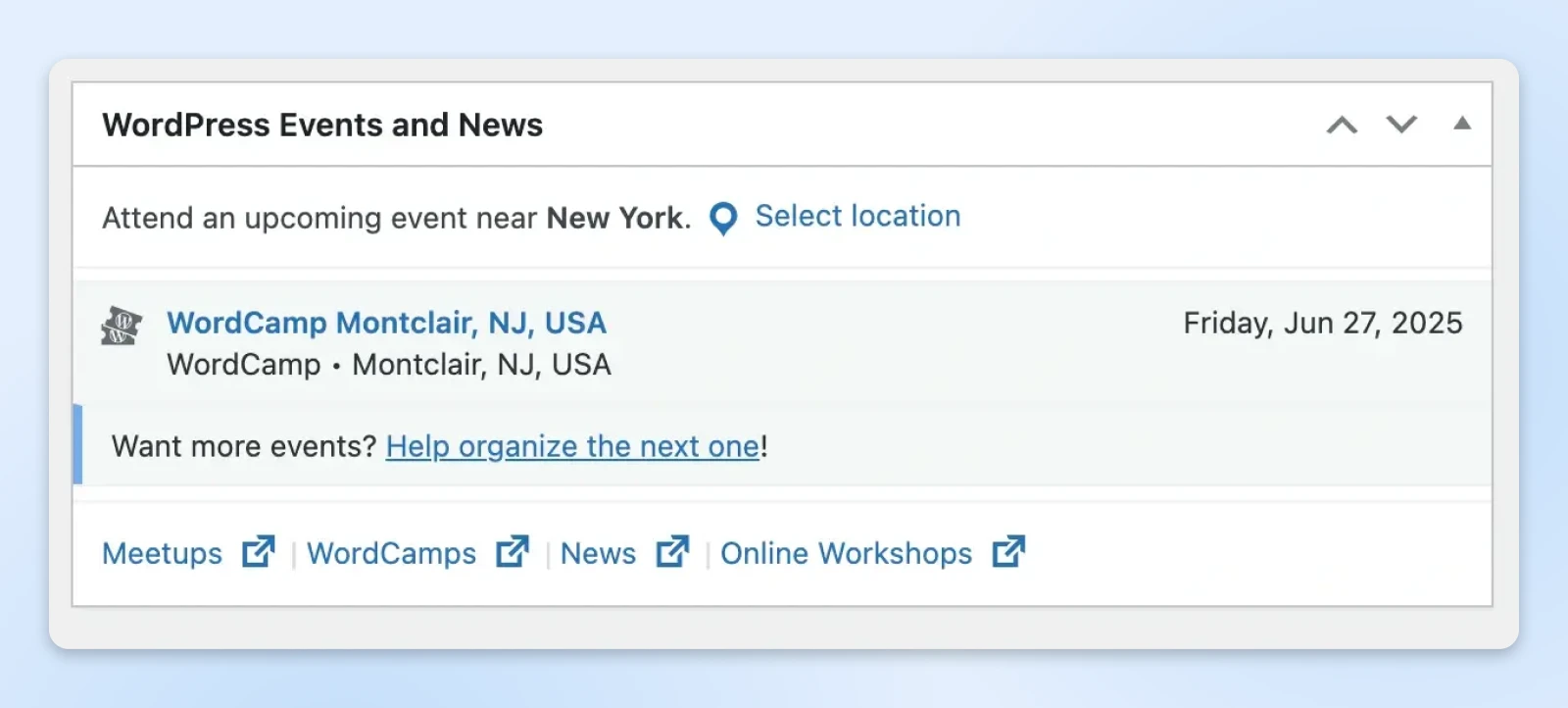
Ultimately, WordPress 6.8 improves performance, accessibility, and user experience while maintaining compatibility with the platform’s core functionality. With fewer new features, this release prioritizes optimization and usability, showcasing updates like speculative loading for faster page transitions, improved tools like the Style Book and starter content, and enhanced security measures.
These updates collectively strengthen WordPress’s ecosystem, making it more efficient, inclusive, and scalable for all users. Whether you’re a developer, site owner, or designer, testing and exploring these refinements is a valuable opportunity to contribute to WordPress’s continued evolution.
Help WordPress 6.8 become the best it can be by testing these features and sharing your feedback. Join us in making it happen!


